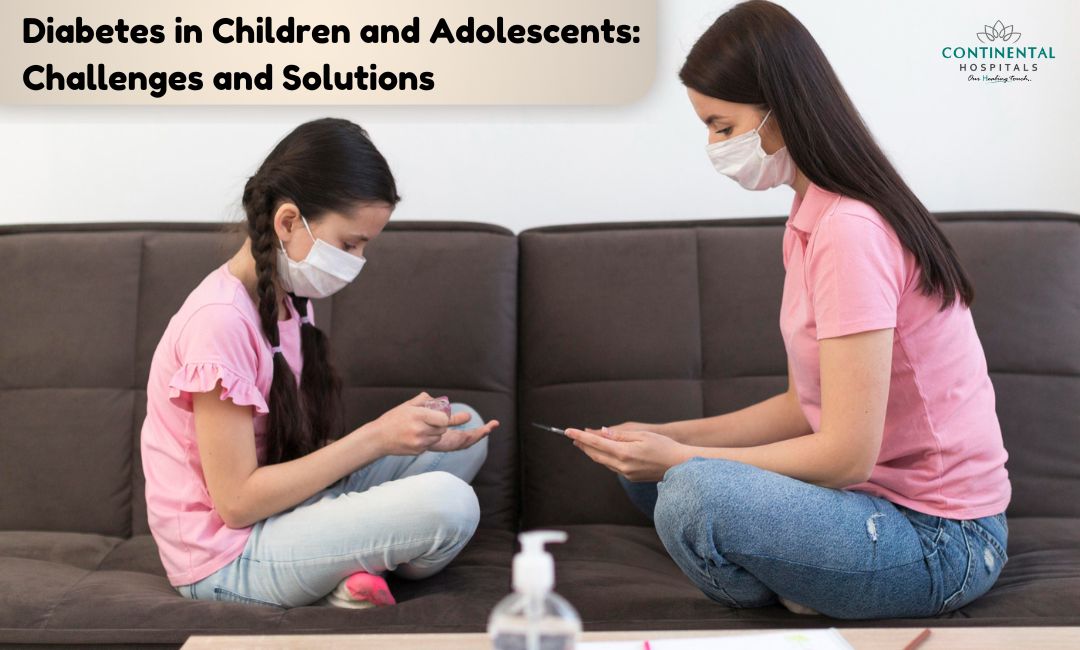Diabetes is not just a disease that affects adults; it can also impact children and adolescents. As the number of young people diagnosed with diabetes continues to rise, it’s essential to understand the unique challenges they face and explore practical solutions. This blog will discuss the types of diabetes commonly seen in young people, the challenges they encounter, and effective strategies for management.
Understanding Diabetes in Children and Adolescents
Two main types of diabetes can affect children and adolescents:
Type 1 Diabetes: This is an autoimmune condition where the body does not produce insulin. It typically occurs in children and young adults. People with Type 1 diabetes need to take insulin every day to survive.
Type 2 Diabetes: This type occurs when the body either doesn’t use insulin properly or doesn’t produce enough insulin. It is becoming increasingly common in children, particularly due to rising obesity rates and sedentary lifestyles.
Signs and Symptoms of Diabetes in Children
Recognizing the signs of diabetes in children and adolescents is crucial for early diagnosis and treatment. Common symptoms include:
- Increased thirst and frequent urination
- Extreme hunger
- Fatigue and weakness
- Blurred vision
- Unexplained weight loss
- Irritability or mood changes
These symptoms can often be mistaken for other common childhood illnesses, making early diagnosis challenging.
Challenges in Diagnosing Diabetes
Misinterpretation of Symptoms: Many symptoms of diabetes are similar to those of other childhood illnesses. For example, increased thirst and urination can be attributed to a urinary tract infection, while fatigue can be seen in various conditions. This overlap can lead to delays in diagnosis.
Lack of Awareness: Not all parents and caregivers are aware of the signs and symptoms of diabetes. In many cases, they may not consider diabetes as a potential issue, especially in younger children. This lack of awareness can result in delayed medical attention.
Rapid Onset of Symptoms: Type 1 diabetes can develop quickly, with symptoms appearing suddenly over a few weeks. If a child shows these symptoms, it’s vital to seek medical help immediately. Unfortunately, the rapid onset can sometimes catch parents off guard, leading to misdiagnosis or delayed treatment.
Limited Screening: While some healthcare providers recommend routine screening for diabetes, it’s not universally practiced. Many children may not receive necessary tests unless symptoms are evident, which can result in missed diagnoses.
Solutions for Early Diagnosis
To overcome these challenges, it’s essential to promote awareness and encourage proactive measures for diagnosing diabetes in children and adolescents.
1. Education and Awareness
Parents, caregivers, and school staff should be educated about the signs and symptoms of diabetes. Schools can play a significant role in this by providing resources and training for teachers and staff. Awareness campaigns can help disseminate information about diabetes, especially targeting communities where cases are rising.
2. Routine Check-ups
Regular pediatric check-ups should include discussions about diabetes, particularly for children at higher risk, such as those with a family history of the disease or those who are overweight. Healthcare providers should perform routine blood glucose tests during these visits to catch potential issues early.
3. Empowering Children and Adolescents
Teaching children and adolescents about their bodies, including how to recognize symptoms of diabetes, is vital. Schools can implement health education programs that discuss healthy eating, physical activity, and the importance of reporting any concerning symptoms to an adult.
4. Collaboration with Healthcare Providers
Healthcare providers should adopt a proactive approach to diagnosing diabetes in young patients. This includes:
- Thorough Assessments: When children present with common symptoms like fatigue or increased thirst, healthcare providers should consider diabetes in their differential diagnosis and conduct appropriate blood tests.
- Encouraging Parents to Voice Concerns: Providers should create an open environment where parents feel comfortable discussing any concerns about their child’s health, ensuring no issue is overlooked.
Living with Diabetes
Once diagnosed, managing diabetes is crucial for the health and well-being of children and adolescents. Here are some strategies for effective management:
1. Insulin Therapy
For children with Type 1 diabetes, insulin therapy is essential. Parents and caregivers must learn how to administer insulin and monitor their child’s blood glucose levels regularly. Understanding how different foods and activities impact blood sugar is also crucial.
2. Healthy Eating
A balanced diet is essential for managing diabetes. Parents should work with a healthcare provider or a nutritionist to create a meal plan that includes plenty of fruits, vegetables, whole grains, and lean proteins. It’s important to limit sugary snacks and drinks.
3. Regular Physical Activity
Encouraging regular physical activity can help maintain a healthy weight and improve insulin sensitivity. Activities like sports, dance, or even family walks can be enjoyable and beneficial for managing diabetes.
4. Emotional Support
Children and adolescents with diabetes may face emotional challenges, including anxiety and frustration related to their condition. Providing emotional support and fostering open communication about feelings is essential. Connecting with support groups can also help children and families share experiences and advice.
Conclusion
Diagnosing diabetes in children and adolescents can be challenging, but with awareness, education, and proactive healthcare measures, early diagnosis is achievable. Understanding the symptoms and risk factors, coupled with regular check-ups and open communication, can make a significant difference. Once diagnosed, effective management through insulin therapy, a healthy lifestyle, and emotional support can lead to a fulfilling life for children with diabetes. By working together—families, schools, and healthcare providers—we can overcome the challenges of diabetes and ensure our children thrive.
Related Blogs:
.webp)














